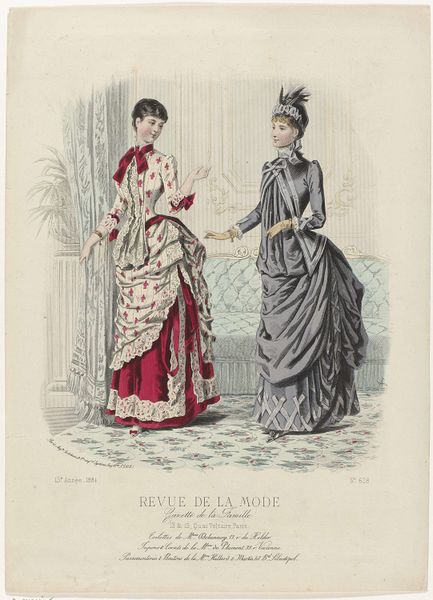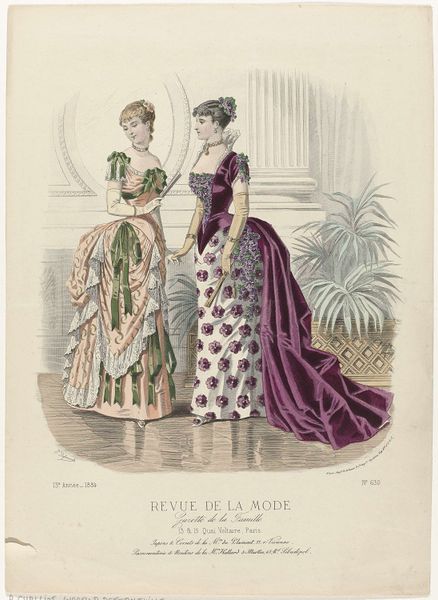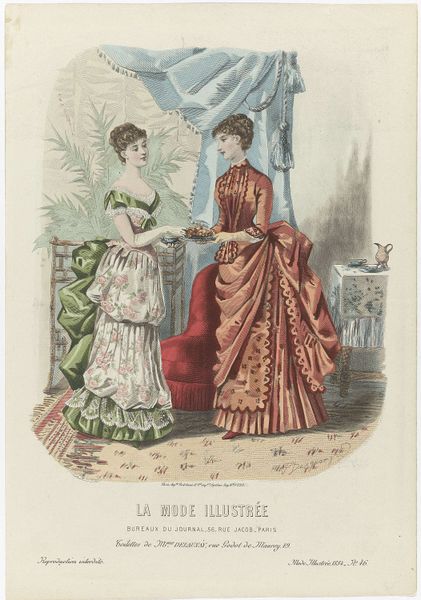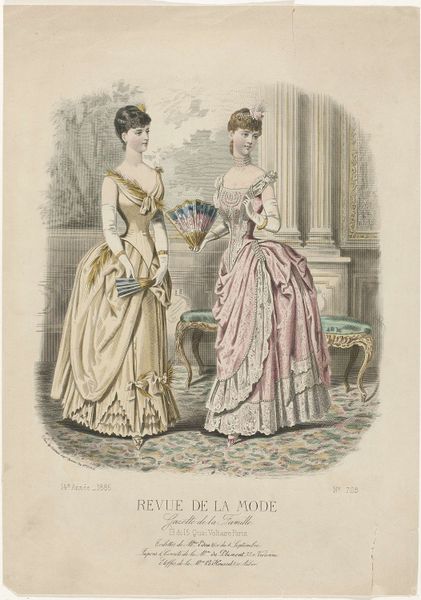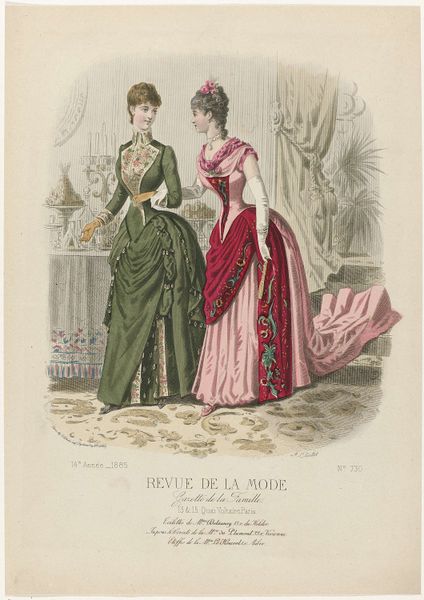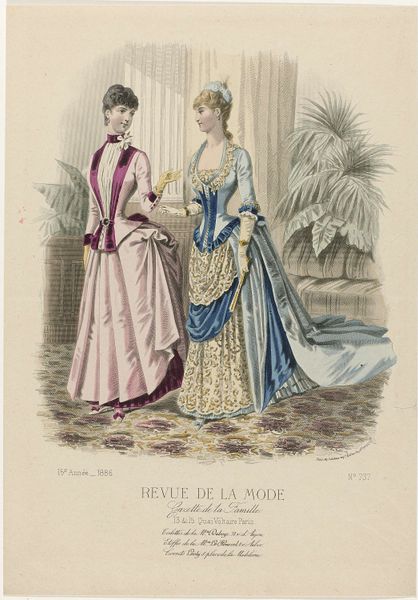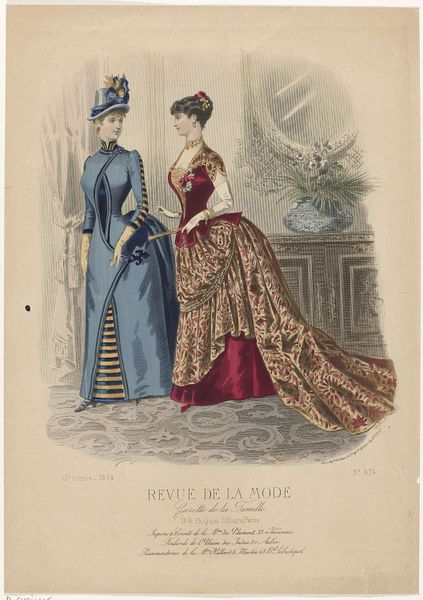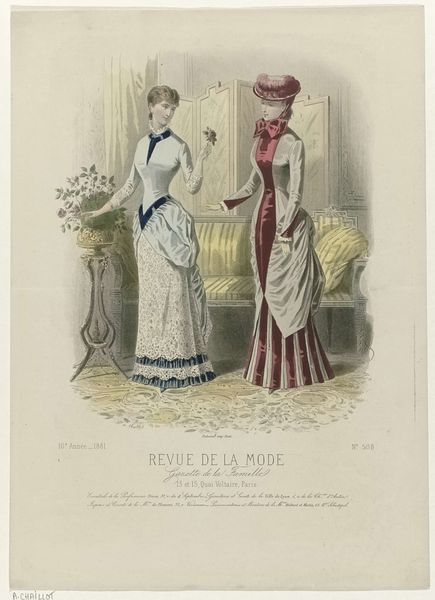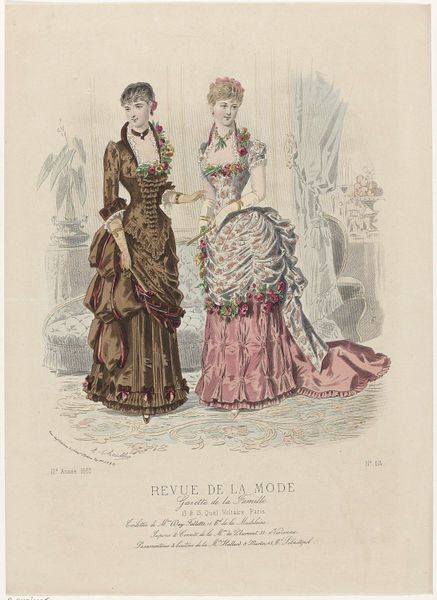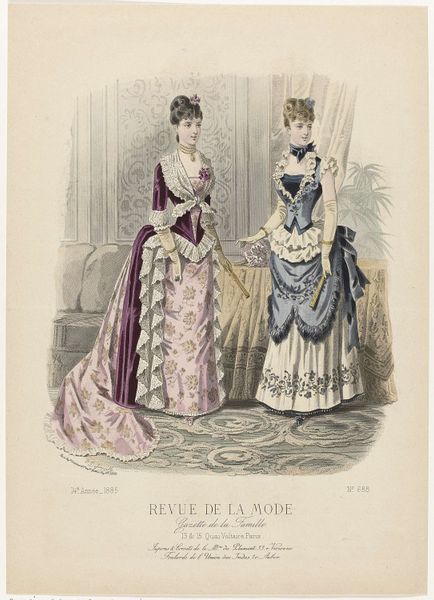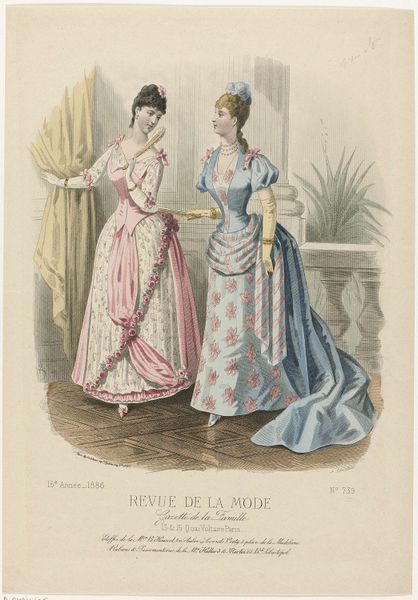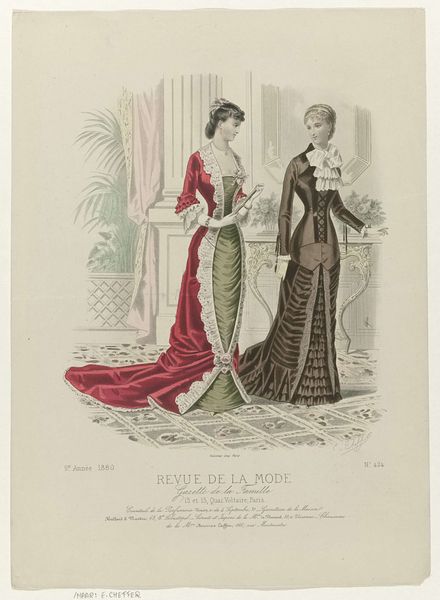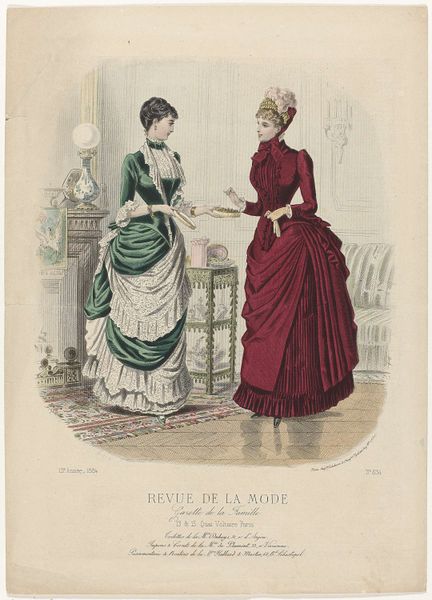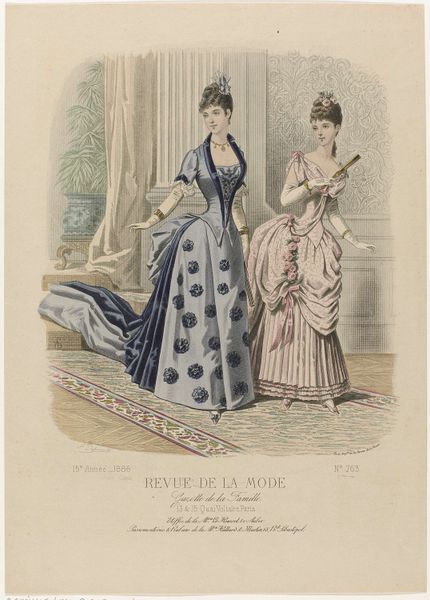
Revue de la Mode, Gazette de la Famille, dimanche 13 avril 1884, 13e annee, 1884, No. 641: Toilettes de M.elles Vidal (...) 1884
0:00
0:00
Dimensions: height 375 mm, width 268 mm
Copyright: Rijks Museum: Open Domain
Editor: Here we have an 1884 print entitled "Revue de la Mode, Gazette de la Famille…" by E. Cheffer, illustrating fashionable dresses of the time. I’m struck by the visual weight of the roses on the dress to the left. What elements of composition do you notice first? Curator: Initially, the symmetry captures my attention. We see a dual presentation, almost like a diptych within a single frame. Note how the artist uses color – the subdued palette, punctuated by the rose accents, creates a sophisticated rhythm. Observe the contrast between the flowing lines of the dress on the left and the more structured silhouette on the right. This juxtaposition invites a deeper reading of form and balance. Do you see how the textures play a part? Editor: The textures? You mean the difference in the rendering of fabrics? Curator: Precisely! The rose-laden gown contrasts with the floral patterned suit, each fabric type possessing its unique textural presence achieved through delicate lines and shading. Furthermore, the draping and folding of these fabrics contribute to the overall composition. Where do your eyes naturally fall? Editor: I'm drawn to the details, especially the individual roses, but the overall image feels somewhat flat despite the implied textures. Curator: Indeed, the flatness is an inherent quality of the print medium. The artist's skill lies in creating the illusion of depth using only subtle gradations and linear perspective. The question arises: how effectively does the medium convey the subject's intent, considering its inherent limitations? Editor: That makes me reconsider my initial reaction; now I notice the meticulous detailing intended to capture light and shadow using the printing process of the era. It highlights the contrast and defines each form, as you pointed out. Thanks for showing me a new approach! Curator: The artwork indeed speaks through the strategic orchestration of its visual components. There is much to discover.
Comments
No comments
Be the first to comment and join the conversation on the ultimate creative platform.
